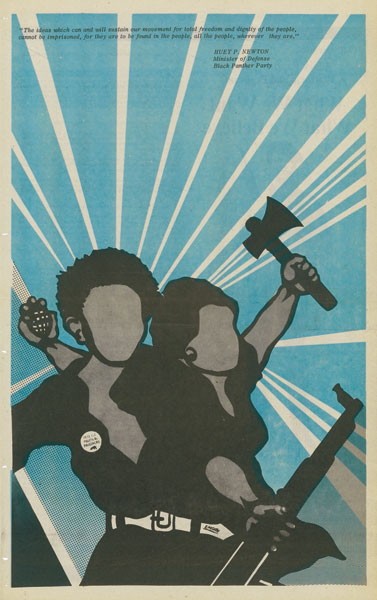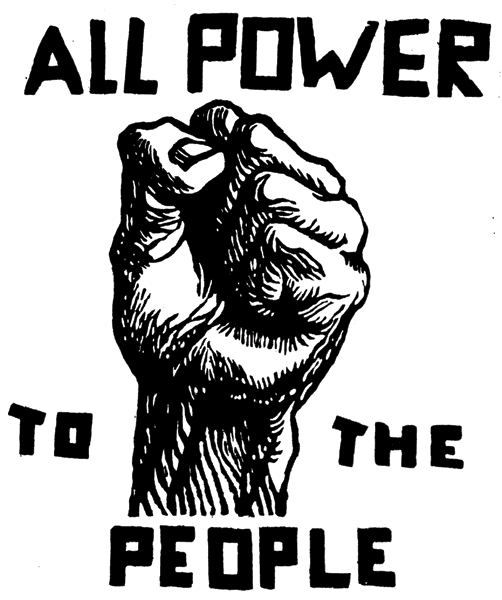Looking at revolution
Black Panther posters by Emory Douglas continue to inspire activism
Are Americans finally on the right track? Was Barack Obama’s inauguration a sign that racial harmony is at last a reality for our neighbours to the south?
A new exhibition of posters and news pages at Aceartinc. takes viewers back to a time when the outlook on race was not so optimistic.
All Power to the People! A Graphic History of the Black Panther Party USA includes artwork from 1966 to 1974 by Emory Douglas, minister of culture for the Black Panther Party and art designer for their newspaper.
Circulated by the Toronto Free Gallery and consisting of posters from the Center for the Study of Political Graphics in Los Angeles, the show at Aceartinc. made it to Winnipeg just in time for Black History Month.
“The show places social activism in a cultural and historical context, and is very prescient now with the outcome of the recent election. It shows how so much has happened in 50 years, and how the Panthers were key in black consciousness raising,” Hannah Godfrey of aceartinc said in a phone interview.
Douglas’s technique involves bold, striking colours, collages of photos and drawings, and an eye-catching aesthetic that helped the newspaper attract a readership that numbered in the hundreds of thousands during the 1970s.
The posters highlight the radical beginnings of the Black Panther Party in 1966, which possessed very different tactics than those of pacifists like Martin Luther King, Jr. Douglas’s belief in the necessity of armed resistance to oppression is apparent in “We Shall Overcome,” which illustrates a black couple moving from passive victimization to militancy.
While many of Douglas’s posters illustrate the use of weapons, they also emphasize the idea that words and images can be used as weapons of change. Many of the works advertise the social nature of the party, calling attention to free breakfasts, drug rehabilitation and medical programs.
Douglas’s “Free Mumia” poster provides a connection between past and present, history and activism, reminding viewers that the American justice system still works against black people.
Mumia Abu-Jamal, a journalist and Black Panther Party activist, was sentenced to death in 1981 for the murder of a white police officer. Since then, witnesses have recanted their testimony and jurors have been exposed as racists. Mumia continues to claim his innocence, and 28 years later, continues to fight for a fair trial while on death row in Pennsylvania.
Is there a risk involved in displaying these posters with little context? Is it possible that they might lose some of their original intensity, in a gallery visited by predominantly educated and middle class white people?
Martha Street Studio and aceartinc. have organized a program in which members of the community will participate in a screen-printing workshop to raise awareness of their group or cause.
It’s an “ideal opportunity to get involved with the community and connect political art and activism,” Godfrey said, adding that promoting community activism is important.
In this way, the social justice fought for by the Panthers, and the revolutionary art created by Douglas, is reinterpreted by a new generation and connected to present and future activism.
All Power to the People! A Graphic History of the Black Panther Party USA is at Aceartinc. (290 McDermot Ave.) until Feb. 28. Visit www.aceart.org.
Published in Volume 63, Number 19 of The Uniter (February 5, 2009)









